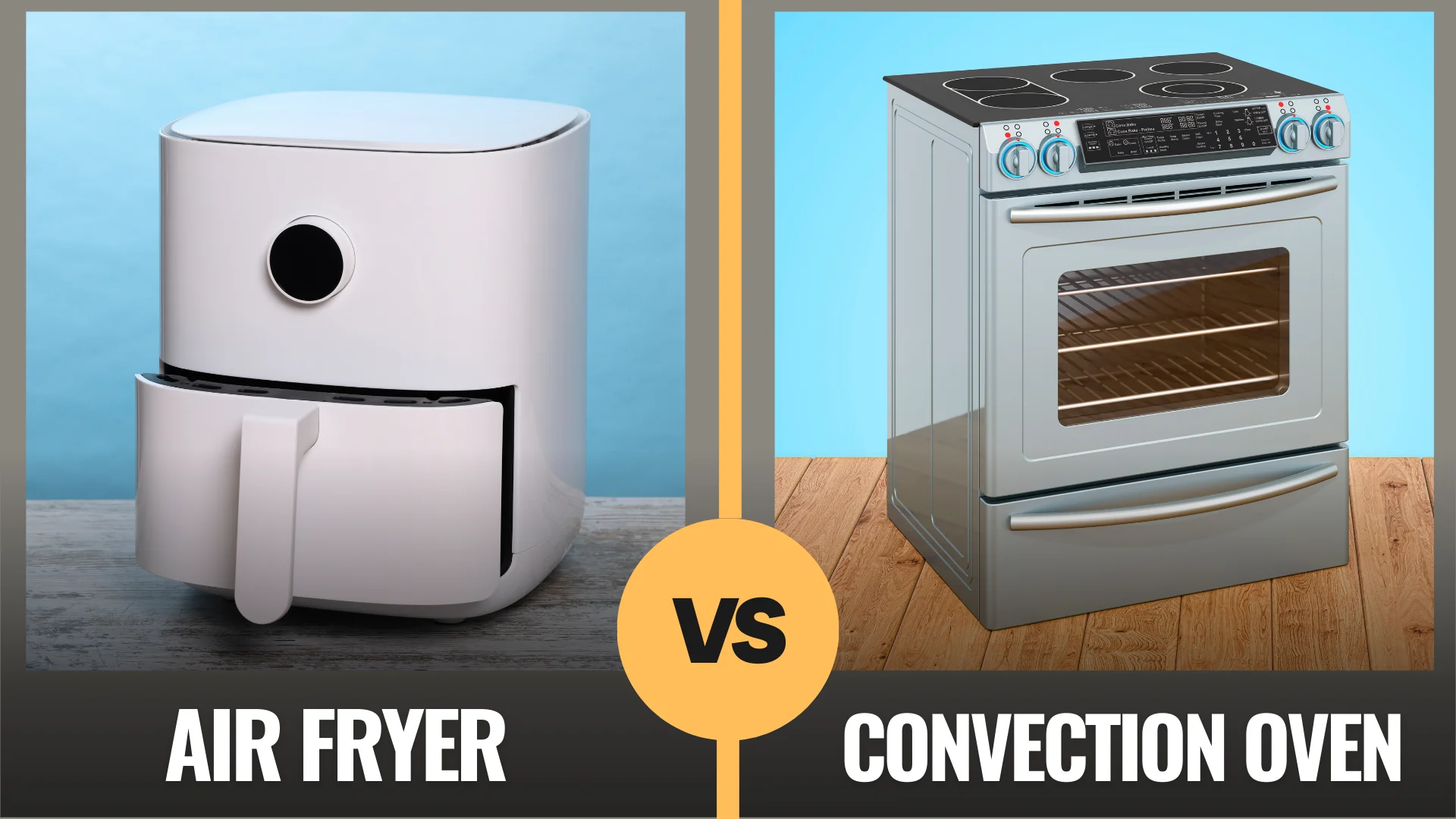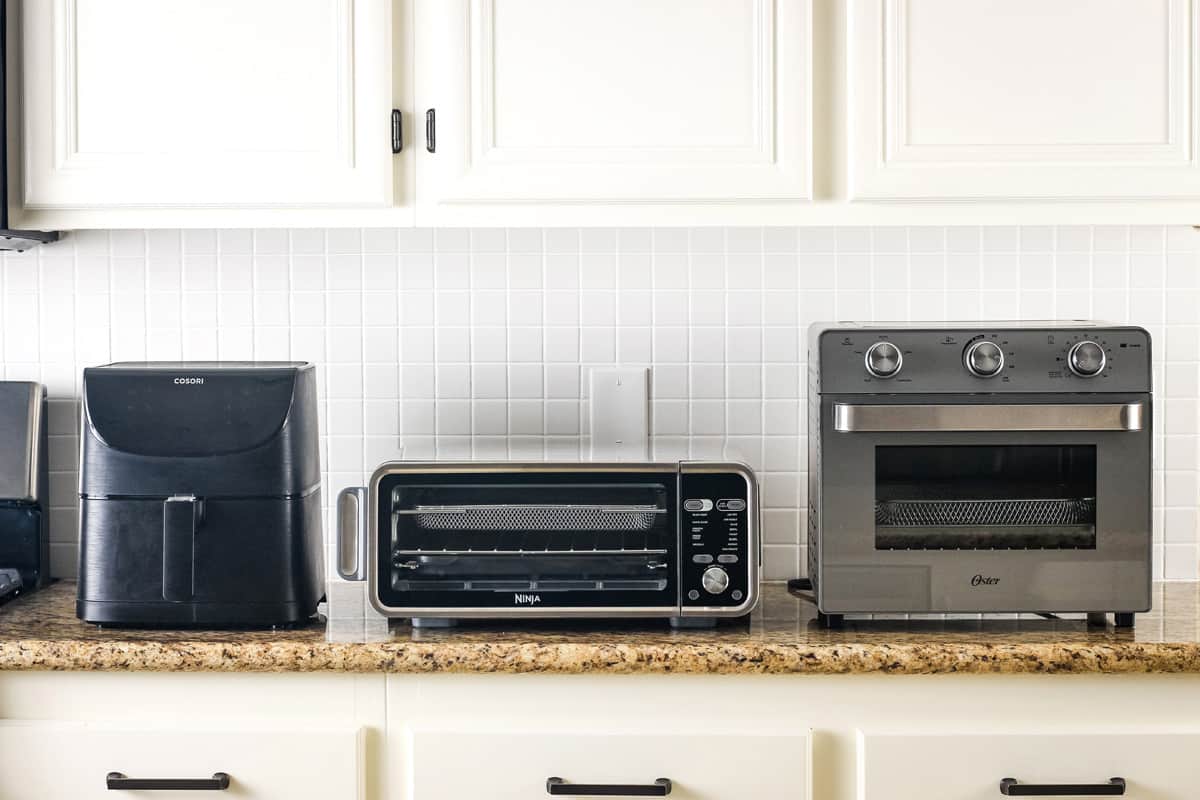- You are here:
- Home »
- Comparison »
- Air Fryer vs Convection Oven: Which One Wins?
Air Fryer vs Convection Oven: Which One Wins?

As an Amazon Associate I earn from qualifying purchases.

If you’ve ever stood in your kitchen wondering whether to use your air fryer or your convection oven, you’re not alone.
Both promise crispy results with less oil, both save time compared to traditional ovens, and both have become kitchen must-haves in 2025.
But when you can only pick one— which one deserves the precious counter space?
Let’s break it down together.
What’s the Difference, Really?
At first glance, air fryers and convection ovens seem almost identical. They both circulate hot air around the food to cook it evenly and quickly.
The main difference is scale. An air fryer is like a miniature convection oven with turbocharged airflow.
That means faster cooking, crispier textures, and less preheating time.
A convection oven, on the other hand, is your versatile, full-sized workhorse.
It can bake, roast, and reheat multiple dishes at once.
If the air fryer is a sprint, the convection oven is a marathon—steady, capable, and perfect for feeding a crowd.
Air Fryer vs. Convection Oven: Feature Breakdown
| Feature | Air Fryer | Convection Oven |
|---|---|---|
| Cooking Time | Super fast—most meals done in 15–25 minutes. | Longer, but handles bigger batches. |
| Capacity | Best for 1–4 servings. | Great for families or entertaining. |
| Crispiness | Exceptional—perfect fries, wings, and snacks. | Even browning but softer texture. |
| Energy Efficiency | Very efficient—smaller chamber, faster heating. | Higher energy use for larger meals. |
| Ease of Cleaning | Quick cleanup—non-stick baskets are dishwasher safe. | Requires wiping racks and trays after use. |
| Cost | Affordable ($70–$150 average). | Moderate ($100–$250+ depending on size). |
Cooking Experience: Day-to-Day Differences
1. Speed and Preheating
The air fryer wins hands down when it comes to speed. Most models heat up in under three minutes and cook small portions twice as fast as a convection oven.
For quick weekday meals—like chicken tenders or roasted veggies—it’s unbeatable.
But if you’re roasting a whole chicken or baking a casserole, the convection oven’s larger capacity makes up for its slower start.
2. Texture and Flavor
If you love that deep-fried crunch, the air fryer delivers it beautifully.
The rapid hot air and smaller chamber lock in crispiness while keeping food moist inside.
Convection ovens produce more of an oven-baked finish—less crunch, but often more even cooking and richer browning.
3. Space and Convenience
Air fryers are compact, lightweight, and easy to store when not in use.
They fit nicely in apartments, dorms, or RVs.
Convection ovens need more counter space, but many newer models double as toasters, broilers, and dehydrators, so they’re worth keeping out full-time.
4. Cleaning and Maintenance
Air fryers win this round for convenience.
Most come with removable, dishwasher-safe baskets that take seconds to rinse.
Convection ovens require more elbow grease—especially if grease splatters bake onto the sides.
Still, regular cleaning keeps both performing efficiently.
Cooking Scenarios: Which Should You Choose?
If You Live Solo or Cook Small Portions
Go for an air fryer.
You’ll save energy and time, and you can prepare nearly anything—chicken wings, fries, vegetables, or even reheated pizza—without turning on a full oven.
If You Cook for a Family or Love to Bake
A convection oven is more your speed.
It lets you roast, bake, and toast multiple dishes simultaneously.
You can slide in a sheet pan of cookies or a 9×13 casserole without juggling batches.
If You Want the Best of Both Worlds
Some hybrid models, like the Ninja Foodi DualZone or Breville Smart Oven Air, combine air frying and convection baking in one appliance.
They cost more up front but save counter space and offer complete cooking flexibility.
Energy Efficiency and Cost of Use
Energy-wise, air fryers generally consume less electricity because they cook faster and preheat almost instantly.
Convection ovens, while more powerful, tend to run longer per meal.
If you frequently reheat leftovers or prepare small portions, you’ll see a noticeable reduction in your electricity bill with an air fryer.
(Source: Good Housekeeping)
Durability and Lifespan
A good air fryer typically lasts 2–4 years with regular use, while convection ovens can last 7–10 years if maintained properly.
If you’re investing for the long term and bake often, a convection oven may be the smarter buy.
But for fast, modern cooking, air fryers deliver excellent short-term value.
(Source: CNET)
Buying Guide: What to Look For in 2025

Shopping for a new appliance? Keep these in mind:
Brand and Reliability
Trusted brands like Ninja,
Instant,
Breville,
and COSORI consistently deliver top-tier performance and reliability in both air fryers and convection ovens.
Final Verdict
If you want speed, crispiness, and easy cleanup—the air fryer wins.
If you value versatility, baking power, and family-sized cooking—the convection oven reigns supreme.
And if you’re still on the fence, hybrid models combine both features, offering flexibility without compromise.
For more appliance comparisons, explore:
Best Air Fryers for Family Meals in 2025 and
Kitchen Appliances Guide.
Amazon and the Amazon logo are trademarks of Amazon.com, Inc, or its affiliates.

